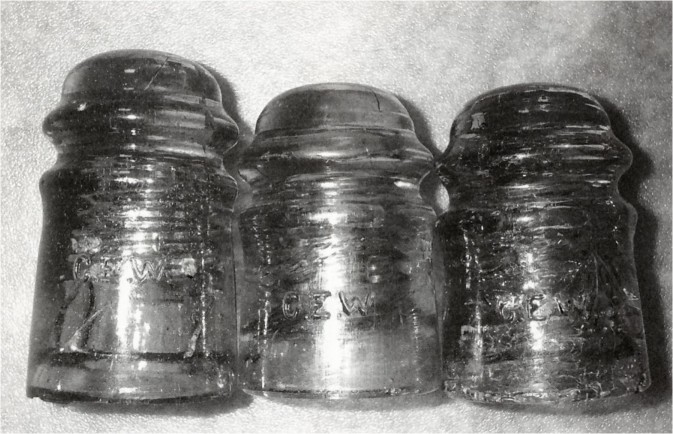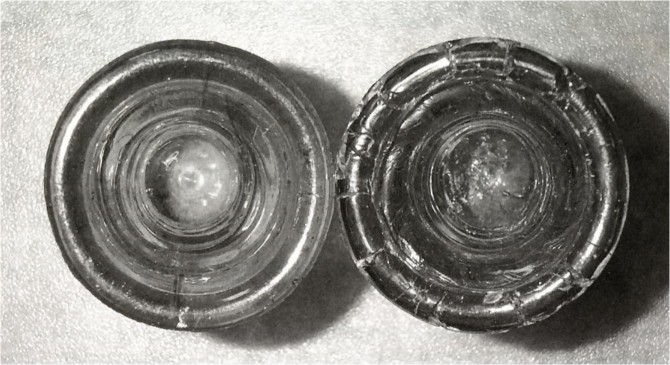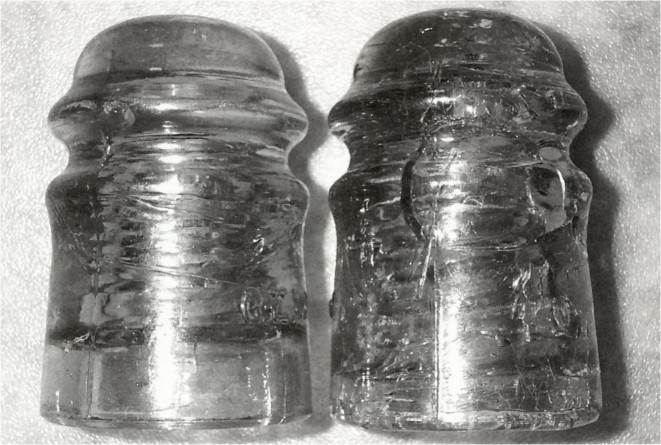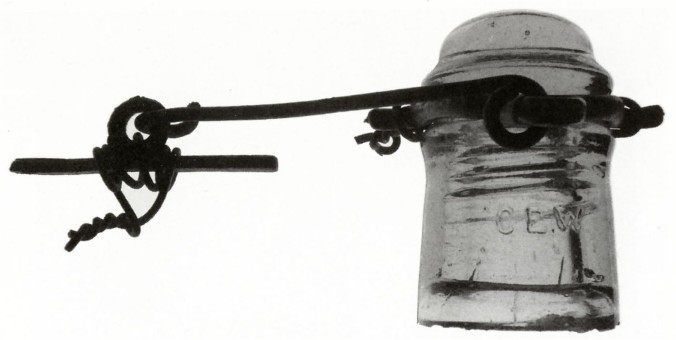C.E.W. UPDATE
Reprinted from "Crown Jewels of the Wire", October 2006, page 7
Several collectors responded to our article on CD 120 C.E.W. ponies in the
July issue. Dr. Quentin Tomich sent in a line-up of purple ponies. He writes,
"Your treatise on CEW's is an eye-opener. I found 9 purple ones here
(Hawaii), all on one 12-mile line. The ones pictured (below) are reconstructions
from large pieces, shards and have clay filler. Most of them were in ruin where
discarded near poles; probably struck by lightning before being discarded; and
then possibly victims of range fires over the years.

"These, and some shards left over, all may have been embossed (10 for
sure). Supposing there were several cases originally installed, it seems
probable from this small sample that all of the lot were embossed. I know of no
unembossed purples ever found in Hawaii. So Hawaii can report a full house of
ten, matching all embossed purples found in the Western USA." We had
reported that there probably not more than ten embossed CEW's known in purple.
Paul Greaves sent in the following pictures and notes:

Paul's "threesome" on the previous page shows an exceptionally tall
C.E.W. on the left; one with an undersized pin hole in the center; and a nice
bubbly, crude specimen on the right. The picture below shows the latter two from
the base. Paul says that while the smaller pin hole in the insulator on the left
may not be obvious in the photo, you notice immediately if you try to place your
thumb inside it. He notes that the insulator will not thread onto a standard
pin.

A picture of the same two insulators below helps to show that the one with
the smaller pinhole was made in a three piece mold. That was the case in similar
ones reported in the article in July. However, Bill Harrison wrote he has a mold
line over dome variety that has the smaller pin hole.

"The Yoke Wire"

Finally, in regards to the yoke, or harness, that was used on CEW's in
certain places, we came across an article in the October 1977 edition of Crown
Jewels. The author, John de Sousa, wrote:
"In heavily forested areas, repair maintenance was frequent. Falling
limbs would cause both the wire and the insulator to break. To eliminate this
time-consuming repair and to provide better service, a new device was needed to
secure the insulator.
"A suspending mount holding the wire from the insulator was used. Both
EC&M's and CEW's were used in this manner. This kept the insulator and wire
intact should something strike the main line.
"Yosemite Valley (California) is best the best known area for this type
bracket, 'the yoke' and insulator. A single conductor line using the ground as a
return was used to serve the communication link between mines in the Sierras and
Sonora. The line was made up of ramshorns from Sonora to a relay point in the
Yosemite Valley. This relay point is where the CEW's came into use.
"These insulators and brackets stretched a total of 23 miles to
Bennetville Mine via Tuolumne. At this point the line continued through Bundy
Mine and ended at Bodie mining town.
"The insulators along these lines were all mounted on large trees in
elevations as high as 10,000 feet above sea level." He believed the CEW's
were in use by 1881.
We noted in the July issue that the two insulators pictured on pages 36 &
37 of that issue reportedly were found in the Yosemite region.
| 